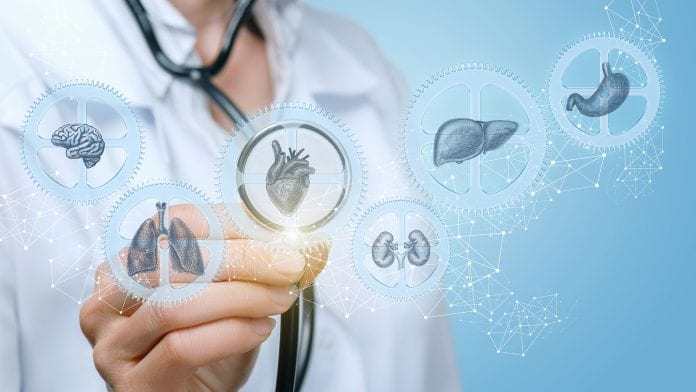
The future of socially distanced lung and heart health monitoring could lie in an inconspicuous yet incredibly sensitive microelectromechanical systems (MEMS) chip.
Scientists have developed a new health monitoring chip that is smaller than a ladybird, and which has an enormous detection bandwidth. The chip can monitor body motions, the sound of a heartbeat, pulse waves traversing body tissues, respiration rate and lung sounds.
The core mechanism of the chip, developed by researchers at the Georgia Institute of Technology, involves two finely manufactured layers of silicon, which overlay each other separated by the space of 270 nanometres – about 0.005 the width of a human hair – and carry a minute voltage.
The research was published the journal npj Digital Medicine and was funded by the Georgia Research Alliance, the Defense Advanced Research Projects Agency (DARPA), the National Science Foundation, and the National Institutes of Health. Study co-author Divya Gupta, a cardiologist at Emory University, collaborated in testing the chip on human participants.
How does the chip work?
Readable electronic outputs are created by the chip through vibrations stemming from bodily motions and sounds, which put the chip into flux and make the voltage flux. In human testing, the chip has recorded a variety of signals from the mechanical workings of the lungs and the heart with clarity, signals that often escape meaningful detection by current medical technology.
Farrokh Ayazi, Ken Byers Professor in Georgia Tech’s School of Electrical and Computer Engineering, said: “Right now, medicine looks to EKGs (electrocardiograms) for information on the heart, but EKGs only measure electrical impulses.
“The heart is a mechanical system with muscles pumping and valves opening and shutting, and it sends out a signature of sounds and motions, which an EKG does not detect. EKGs also say nothing about lung function.”
The chip acts as an advanced electronic stethoscope and accelerometer in one and is aptly called an ‘accelerometer contact microphone’. It detects vibrations that enter the chip from inside the body while keeping out distracting noise from outside the body’s core like airborne sounds.
The signals from the body are recorded in sync, potentially offering the big picture of a patient’s heart and lung health. For the study, the researchers successfully recorded a ‘gallop’, a faint third sound after the ‘lub-dub’ of the heartbeat – which are normally elusive clues of heart failure.
Algorithms for clinical readings
Medical research to date has been largely inconsistent regarding health monitoring, and has relied upon clinician skills influenced by human error. The new chip produces high-resolution, quantified data that future research could match to pathologies in order to identify them.
Though the chip’s main engineering principle is simple, making it work and then manufacturable took Ayazi’s lab ten years, mainly because of the minuscule scale of the gap between the silicon layers.
Ayazi said: “We are working already to collect significantly more data matched with pathologies. We envision algorithms in the future that may enable a broad array of clinical readings.
“That very thin gap separating the two electrodes cannot have any contact, not even by forces in the air in between the layers, so the whole sensor is hermetically sealed inside a vacuum cavity. This makes for that ultralow signal noise and breadth of bandwidth that are unique.”









